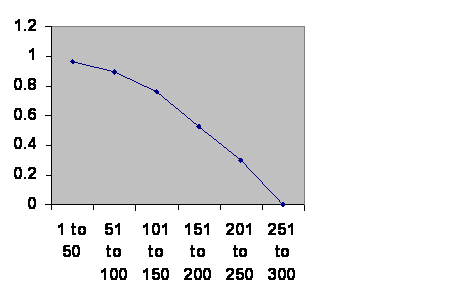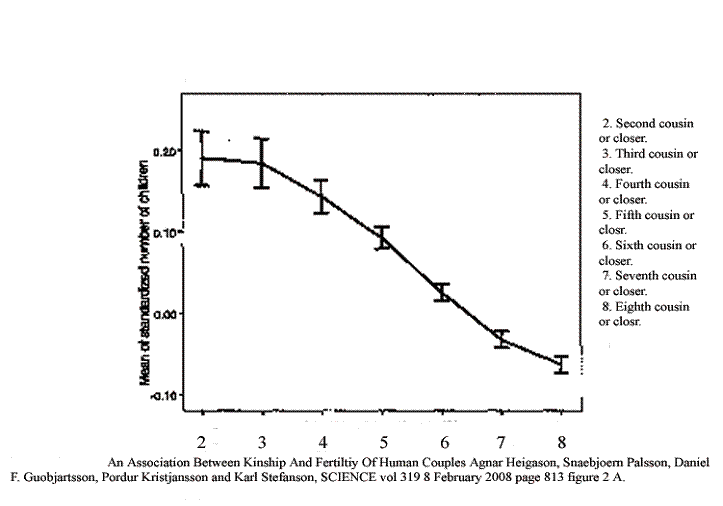October 31, 2013
David A. Dickinson
Science writer, educator, tutoring, birthday parties, telescope training, astronomy consults, website Astroguyz.com
ghedi_dave@yahoo.com
Dear Dr. Dickinson,
At the Necronomicon science fiction convention I had just finished my presentation about how to build a flying saucer. It had gone nicely so of course I was exhausted. Too tired to make my way back to the room I found an interesting panel discussion and sat in, head resting on hand, resting on elbow, resting on what I can’t imagine, but I did not in fact fall out of the chair. The mind was engaged, but the soul was elsewhere. Eventually a panel member called on me. “Your hand is up. Do you have a question?”
I picked up my head. “No.” But of course now my hand was up.
“You look like you have a question.”
“I really don’t.”
“Fake it.”
“Well a remark then. You mentioned the Drake equation, a series of numbers to multiply together and get an estimate of the number of civilizations there might be in the galaxy making radio broadcasts we might overhear. On the left is the rate of star formation in the galaxy, then fraction of stars that have planets and so forth. We are working through the factors from left to right, but the far right is the easiest: how long a civilization making radio broadcasts will survive. It’s three hundred year maximum and about 150 on average.”
After the session you were kind enough to speak with me and agreed to let me send you my evidence.
As I began to brush up on the equation I found a mention that Michael Shermer had suggested 304 years on average back in 2002. I had already made my estimate but only a couple of years before. Well since our estimates are so close I should probably give not only my empirical data but my analysis of it and a proposed mechanism. So the letter will be longer than I had intended.
What Shermer and I both did was to look at the duration of earthy societies and see how long they lasted. He distinguishes between earlier civilization, which lasted longer, and more recent civilizations. I don’t actually do that. I just confine myself to events before the 20th century. Here, for instance is a graph of the survival of civilizations in southern Mesopotamia:

Information taken from R. H. Carling THE WORLD HISTORY CHART International Timeline Inc. Vienna, VA 1985. The experience of Southern Mesopotamia. The vertical axis is The chance of an empire of any age continuing to rule locally for another 50 years. The horizontal axis is the ages of the empires. The Ottoman empire has been divided in two at the time the method for recruiting Janissaries changed.
When I first made the graph I was stunned. I have since then been amazed that nobody else much seems stunned. The line is so clean that there has one and only one mechanism that brings down the bulk of civilizations. Now if somebody had drawn this graph a hundred years ago the expectation would have been a line that goes up. Some people are better at maintaining a society (or have the right institutions or technology or gods or whatever). Those less blessed die out earlier on average so what you are left with is the better ones, so they should have a better chance of survival over each successive half century. But the evidence will admit no explanation of the sort. It is not something that is inside the society.
Nowadays we would be more likely to say, “Climate.” Climate change did it; it brought down every one of those civilizations. But the climate should be indifferent to human activity. Fossil fuels may be changing the climate now. The introduction of rice agriculture into China may have affected the climate in the past. But southern Mesopotamia seems an unlikely tail to wag the whole dog. So climate should be unrelated to the age of the empire – society – whatever you want to call a whole lot of people working together. Otherwise the line should be flat. The same logic holds for anything else outside of the society. So if there is a mechanism that destroys societies and it is neither inside nor outside it must be the very fact of there being a large society.
You can look at nobabies.net for more data along these lines. There are some exceptions I shall not talk about just now.
So why should every large society be doomed. Well consider that we are talking about species that have sexual reproduction. Pretty much all the most interesting animals that are fairly close to what might some day have a civilization indulge in sex. Let’s take that as a universal rule. Next consider two sister chromosomes; just one generation before they were in a gonad of a common parent of the animals, say mice, that now carry the two.


One mouse scurries across the valley, glacier splits the valley in two. The glacier remains for two thousand mouse generations. The F2,000 mouse from the far side of the valley returns and mates with an F2,000 mouse from the near side. But they cannot have normal fertile offspring. There has been speciation.
 F1
F1  F1
F1
 G
G
l
a
c
i
e
r......
 F2,000
F2,000  F2,000
F2,000
Now, instead of a glacier, the mice mate at random throughout the valley, the population being constant at 1,000. Since there are 2,000 copies of the chromosome it takes on average 2,000 generations before F2,000 mates with F2,000. The offspring are not fertile. Since this is true of every part of every chromosome in every mouse, the population dies. (Often this graphic does not transfer well. If it looks like a mess, ignore it. The text should suffice.)
..  F1.........................................................
F1.........................................................  F1
F1
... ................... ......... ........................ ......................
........
 .................................................................
................................................................. ..........
..........
 F2,000 ..................
F2,000 .................. .F2,000
.F2,000
Obviously this is an event that evolution will not tolerate, neither an intelligent designer nor a really stupid designer for that matter. So a preventive mechanism must be in place that requires a couple to share ancestors over the previous 10 generations. Otherwise there will be an eventual population crash.
That is why the mechanisms developed. One or more had to.
So random mating populations in the long run must remain below a thousand or else reduce the rate of speciation to that they are out maneuvered by faster speciating forms, which then get a head start in selection.
If the ten generation rule seems rather arbitrary, consider if the rule were five generations. That would mean a maximum freely mating animal population would be 32. That seems precarious. Also it is rather close to inbreeding. Or if you like, let’s pretend the rule is twenty generations. That would permit a random mating population of about a million. But it would also mean the mechanism underlying this has to be able to distinguish between a potential mate that shares one part per million of a genome from one that shares one part per two million of a genome. That would be implausible precision. In real life the mechanism comes pretty close to being able to pick up a difference at the one part per thousand level. Here is a graph from a paper published in Iceland comparing kinship with fertility.

An Association between Kinship and Fertility of Human Couples Agnar Helgason et al. SCIENCE vol. 329 no. 5864 February 8, 2008 page 813 – 816
The mechanism can distinguish between about seventh cousin and eighth cousin, even though by the time you get out to seventh cousin you are at a fertility that is not compatible with long term survival. (The numbers have been “normalized” or compared with the population average, but reproduction in Iceland is now just about at replacement, so dropping below zero is curtains in the long run.)
A stickler for detail would point out that “everybody died by three hundred years” does not equal “the last one dies out at three hundred.” Chances are the longest lasting society made it only to within a decade or two of three hundred. Also the birth of the last baby does not happen on the day the civilization dies. The weight of the evidence is that final drop in birth rate comes on abruptly. The attached paper should make that clear. So on the day of the last baby there are actually a fair number of children. They have a reasonable chance of keeping the society alive until they are about fifty, say another forty years. So my estimate of 10 generations may be sanguine. Eight might be closer to the truth. Two are three hundred might in fact be the largest population size that can survive in the very long run.
All of these arguments, although supported by data, are based on first principles. They should apply to any planet with a civilization.
So how long is an extraterrestrial generation? I think of our generation time as being about 30 years over the long haul. That seems to be the verdict of family history going back a couple thousand years. So would other life forms be about the same. Of course it is impossible to tell, but let’s play with it. Let me define the term “untelligence” as being the biological base that is needed to have a high tech civilization. It includes at the least the physical dexterity to manipulate machinery, a social order that permits cooperation in groups too large to be biologically viable and the cognitive powers to be able to function in the context of such a society. Being smart enough to manipulate tools isn’t nearly enough; crows do that.
So our theoretical little green man arrives in an alien society. For a period of time he spends just about all his time and energy on growth and development. He won’t reproduce until that is about finished. Then he will spend about the same length of time at the peak of his powers nurturing his own offspring. Then he’s used up and basically discarded because another generation is on line. So can he grow and develop as fast as a human? Chemical reactions happen faster at higher temperatures, so in a warm climate he might have a shorter life and a longer one in a colder climate. But on earth we have “always cold” climates as well as “always warm” climates and I am not aware of any really serious difference in life span. So a generation time of thirty years seems reasonable.
So I say three hundred years is a fair estimate for how long a society can survive. By the time radio waves are being used, one way or another it hast to be a global society. Bits may not be fully integrated right away, but if you can talk to people sooner or later you are going to want to do business so when the society that can use radios goes down it will take the whole planet out. Until then there is the opportunity for low tech civilizations to come and go indefinitely.
Of course there is a possible escape. If some life form understood the explanation then it would become immortal. Just as it’s easier to play chess by knowing the rules than by simply memorizing a huge number of games without knowing the rules, if the little green men tumbled to the reality of their situation then there would be no limit on them. However there appears to be some sort of mental editor in humans that prevents us from learning it. To me that is the greatest puzzle of all.
There have been 59 visitors over the past month.
Home page.



 F1
F1  F1
F1 G
G F2,000
F2,000  F2,000
F2,000 F1.........................................................
F1.........................................................  F1
F1 F2,000 ..................
F2,000 .................. .F2,000
.F2,000 